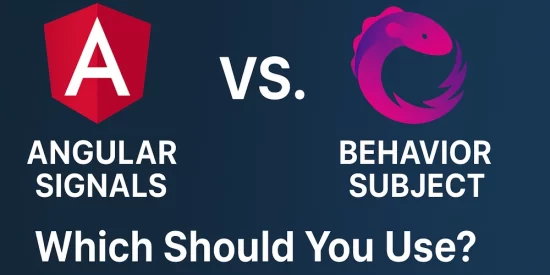We as angular developers have long relied on RxJS BehaviorSubject for managing reactive state. But with the introduction of Signals in Angular 16+, there’s now a simpler, built-in alternative. So, should you replace your BehaviorSubjects? Let’s break it down.
1. Quick Overview
BehaviorSubject (RxJS): Emits the latest value to subscribers, supports streams & reactive programming, widely used before Angular Signals.
Angular Signals: A new reactivity model introduced in Angular 16+, allows fine-grained reactive updates without RxJS complexity.
2. Syntax Comparison
// BehaviorSubject Example
import { BehaviorSubject } from 'rxjs';
const count$ = new BehaviorSubject(0);
count$.subscribe(value => console.log(value)); // 0
count$.next(count$.value + 1); // emits 1
// Signal Example
import { signal } from '@angular/core';
const count = signal(0);
console.log(count()); // 0
count.set(count() + 1); // 1
3. When to Use Each
Use Signals if:
- You want simpler, built-in state management.
- You don’t need complex async operators.
- You want automatic fine-grained change detection.
Use BehaviorSubject if:
- You already have heavy RxJS usage.
- You need operators like map, filter, debounceTime.
- You’re integrating with streams, websockets, or external APIs.
4. Performance
Signals can be faster for component-level state because they avoid unnecessary change detection.
BehaviorSubject is still better for large async workflows or event streams.
5. Migration Strategy
- If you’re starting fresh → prefer Signals for simplicity.
- If you have an existing RxJS-heavy app → stick with BehaviorSubject until you can gradually refactor.
💡 Verdict: Signals are the future for local Angular state, but RxJS (and BehaviorSubject) isn’t going anywhere for complex reactive pipelines.
Stay connected for more knowledge — and drop a comment if you have any questions!




